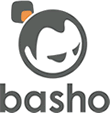Java Conference
Java
The new Java 8 stream library is the most exciting addition to come to Java in a long time. It allows entire algorithms to be expressed in one line, parallelism to be obtained on-demand, and plumbing code to be flushed down the drain. This session will show you how to think in streams, effective parallelization, plus advanced concepts like mutable reduction and declarative collection. Write better code with streams. This talk will show you how.
Java
The HTML5 juggernaut is radically changing client-side development on mobile devices as well as the desktop. Given the pervasiveness of HTML5, where does JavaFX fit in the picture? This presentation examines both HTML5 and JavaFX, covering the technical strengths and weaknesses of each. This is a code-intensive session. An app written in HTML5 and JavaFX will be compared. Also shown how the two technologies can complement each other.
Java
Java EE 7 provides a strong foundation for developing the back end for your HTML5 mobile applications. This heavily code-driven session shows you how you can effectively utilize Java EE 7 as a back end for your Apache Cordova mobile applications. The session demonstrates Java EE 7 technologies such as JAX-RS 2.0, WebSocket, CDI, and Bean Validation. It provides an overview of the basics of Apache Cordova and important JavaScript libraries.
Java
Functional programming techniques and principles are important tools for software developers. They tend to produce code that is concise, reusable, simple to test and easy to parallelize. This talk will cover the basics of functional programming such as pure functions, higher-order functions, immutable data structures, data types, pattern matching, etc. Java and Scala will be used to illustrate the concepts.
Java
After some time of Java EE 7, we can finally get a feedback from the good and bad parts. What will be expecting us for Java EE 8? A big community survey was made to define new JSRs, CDI questions and NoSQL. This talk will summarise the results and risk some predictions based on Java EE 7 production systems.
Java
This session introduces JMS 2 (JSR 343), the first update in more than a decade and easily the longest-awaited component of the Java EE 7 standard. The biggest new feature of JMS 2 is a new API that makes JMS much easier to use, especially in a Java EE application. With JMS 2 final with Java EE 7, now is an ideal time to find out more about it. In this session, we will also discuss what might be next for the JMS specification.
Java
Curious about those weird parameter we pass as arguments for JVM? This talk will show them in a didactic way, explaining the basics about byte code, memory model, garbage collector and many other concepts that developers usually have problems. Some performance tips based on JVM internals will be presented as well.
Java
La sécurité d'une application est en constante évolution. Un jour, elle peut être considérée comme sécuritaire alors de lendemain elle ne l'est plus. Comment est-ce possible? Tous les jours, des vulnérabilités sont découvertes dans des composants dont vos applications dépendent. Il existe des outils pour supporter des activités comme la revue de code ainsi que la revue des dépendances. Cette présentation fera un survol de ces outils.
Java
Every Java developer should understand the basics of JVM bytecode. It’s fun, it can help improve performance, diagnose problems and even opens the door to building languages of your own. In this talk, you’ll learn how the most common bytecode operations work and see visual representations of how the JVM executes that code. Ultimately, we'll create a new language by using a few Java libraries that generate bytecode.
Java
OAuth 2.0 is an open authentication and authorization protocol which enables applications to access each others data. This talk will presents how to implement the OAuth2 definitions to secure RESTful resources developed using JAX-RS in the Java EE platform.
Java
The popularity of cloud environments is real and the deployment of SaaS applications is becoming a strong business model. To support these applications is essential to create a multi-tenancy environment separating each customer data and providing a single execution environment with security and isolated customer contexts. This talk will demonstrate different technologies and strategies used to implement those features using the Java EE platform.
Java
This session outlines how to effectively test Java EE APIs like JSF, Servlet, CDI, EJB 3, JPA, WebSocket and JAX-RS. Java EE includes a number of new features that enhance testability like generic dependency injection, portable extensions and embedded containers. Using these features and best of breed tools like JUnit and Arquillian it is possible to perform unit, integration, system and functional testing for Java EE APIs at all layers.
© 2010-2025 ConFoo. All rights reserved. Code of Conduct
Cookie Consent
To provide the best experiences, the usage of cookies are necessary. Some are essential for the proper functioning of the site, while others help us better cater to your interests.
























